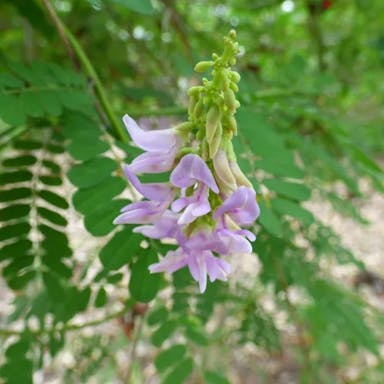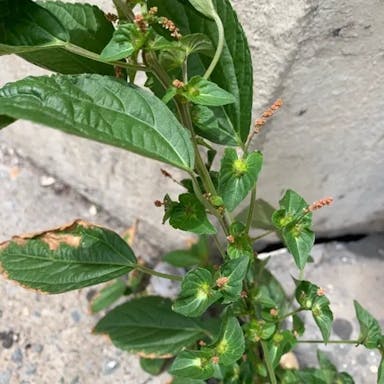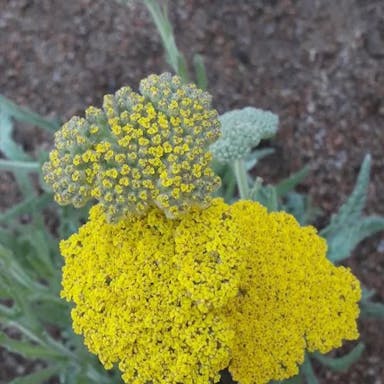Chinese giant-hyssop is susceptible to powdery mildew, a fungal disease that appears as white powdery spots on leaves, stems, and flowers. This disease thrives in humid conditions and can weaken the plant over time. To prevent powdery mildew, ensure good air circulation around the plant, avoid overhead watering, and remove and destroy infected plant parts promptly. Another common pest that affects Chinese giant-hyssop is aphids, small insects that feed on plant sap and excrete a sticky substance called honeydew. Aphids can cause leaves to curl, yellow, and distort, leading to stunted growth. To control aphids, introduce natural predators like ladybugs, spray the plant with insecticidal soap, or use a strong stream of water to dislodge them. Regularly inspect the plant for signs of infestation to prevent severe damage.
Chinese giant-hyssop
- Common name
- Wrinkled Giant Hyssop,Korean Mint
- Scientific name
- Agastache rugosa
Basic Information
- Lamiaceae Family Agastache Genus Chinese giant-hyssop Species
- Lamiaceae > Agastache > Agastache rugosa
- 83%
- The Completeness of This Encyclopedia
Please help us complete the encyclopedia, Terrarium is a encyclopedia service to be completed with everyone in the world. Currently, this page is 83% complete. For more information on how to contribute, please click here.
- Forb/herb
- Perennial
- Height
- 60cm ~ 120cm
- Flower Color
- Leaf Color
- Anthesis
- summer, fall
- Sunlight Exposure
Full Sun Long hours of sunlight from morning to afternoon Partial Shade A location in the shade of a tree or where either the morning or afternoon is shaded Full Shade A place where there is no direct sunlight
- Full Sun
- Hardiness Zones
This is an indicator to know to which zone each plant can winter. Knowing the zone of each plant gives you an idea of the cold temperature resistance when grown in the ground without a roof. 2: -42.7 to -40.0 3: -39.9 to -34.4 4: -34.3 to -28.9 5: -28.8 to -23.3 6: -23.2 to -17.8 7: -17.7 to -12.2 8: -12.1 to -6.7 9: -6.6 to -1.1 10: -1.0 to 4.4 11: 4.5 to 10.0
- 5-10
- Cold resistance
- Good
- Heat resistance
- Good
- Habitat of origin
- China, Korea, Japan
- Growth Rate
- Normal
What is Chinese giant-hyssop (Agastache rugosa)?
What is Chinese giant-hyssop (Agastache rugosa)
Flower meaning
Chinese giant-hyssop typically blooms from mid to late summer in the United States. The flowers are at their best during the month of August when they display vibrant colors and attract pollinators. The blooming period usually lasts for about 4-6 weeks, depending on environmental conditions. To extend the blooming time, deadhead faded flowers regularly to encourage new blooms to form. Additionally, providing adequate sunlight, well-drained soil, and regular watering can help promote continuous flowering throughout the season.
Calendar of Chinese giant-hyssop (Agastache rugosa)
Calendar
Chinese giant-hyssop thrives best when potted rather than in-ground due to its invasive nature. To pot this plant, choose a container with good drainage, fill it with well-draining soil, and plant the Chinese giant-hyssop at the same depth as it was in its previous container. Water the plant thoroughly after planting and place it in a location with partial shade. When repotting, select a slightly larger pot, gently remove the plant from its current container, and place it in the new pot with fresh soil. Mist the plant occasionally to maintain humidity levels. If mishowing occurs, trim off any damaged or dead leaves and adjust watering and lighting conditions accordingly.
How to grow Chinese giant-hyssop (Agastache rugosa)
Watering
Chinese giant-hyssop is available in two main varieties: 'Blue Fortune' and 'Black Adder'. 'Blue Fortune' features vibrant blue flowers and grows up to 3 feet tall. It is known for attracting pollinators. On the other hand, 'Black Adder' has deep purple flowers and reaches a height of 4 feet. It is drought-tolerant and low-maintenance. When selecting seeds, opt for plump, firm ones without signs of damage. For seedlings, choose those with healthy green leaves and sturdy stems. Ensure the roots are well-developed and not root-bound. It is essential to select varieties and seeds that suit your garden's conditions for optimal growth.
Soil and Fertilizer
The flower language commonly used in America for Chinese giant-hyssop is: - Elegance - Harmony - Peace One typical example is "Elegance," symbolizing the plant's graceful appearance and refined beauty, often associated with sophistication and charm.
Sunlight and Place
Chinese giant-hyssop, scientifically known as Agastache rugosa, is a perennial herbaceous plant native to East Asia. It is characterized by its aromatic leaves and spikes of tubular flowers that attract pollinators like bees and butterflies. The flowers of Agastache rugosa can range in color from shades of purple, pink, and blue to white. This plant belongs to the mint family, Lamiaceae, and is commonly used in traditional Chinese medicine for its medicinal properties. Agastache rugosa is known for its hardiness and ability to thrive in various soil types, making it a popular choice for gardeners. It typically grows to a height of 2-3 feet and produces small, edible fruits. There are several cultivars of Agastache rugosa available, each with unique flower colors and growth habits. This plant is relatively easy to grow, requiring minimal maintenance once established in a suitable location.
Advanced Information of Chinese giant-hyssop (Agastache rugosa)
Pruning
For Chinese giant-hyssop, water deeply once a week during the growing season, ensuring the soil is evenly moist but not waterlogged. During the dormant period, reduce watering to once every two weeks, allowing the top inch of soil to dry out between waterings. In winter, decrease watering frequency to once a month, as the plant requires less moisture during this time. Monitor soil humidity by inserting a finger into the soil; if it feels dry beyond the top inch, it's time to water. Avoid overwatering, as it can lead to root rot, and adjust watering based on environmental conditions such as temperature and humidity.
Planting and Harvest
Chinese giant-hyssop thrives in full sun to partial shade. It exhibits excellent cold tolerance, surviving in temperatures as low as -20°C. This plant also has good heat tolerance, enduring high temperatures up to 35°C. It prefers an optimum temperature range between 18-24°C. During summer, provide ample water and ensure well-drained soil to prevent waterlogging. In winter, protect from frost by mulching around the base. Place in a location with at least 6 hours of direct sunlight daily for optimal growth. Chinese giant-hyssop benefits from strong sunlight but can tolerate some shade. It flourishes with 6-8 hours of sunlight per day. Adjust placement based on local climate conditions for best results.
Propagation
Chinese giant-hyssop thrives in well-drained soil with a pH level between 6.0 and 7.5. It prefers rich, loamy soil that is slightly acidic to neutral. Fertilize the plant in early spring with a balanced fertilizer, such as a 10-10-10 formula, to promote healthy growth. Apply the fertilizer at a rate of 1 pound per 100 square feet of planting area. Repeat the application every 4-6 weeks during the growing season. Avoid over-fertilizing, as it can lead to excessive foliage growth at the expense of flower production. Monitor the plant's growth and adjust the fertilizer application accordingly.
Pests and Diseases
Chinese giant-hyssop benefits from regular pruning to maintain its shape, promote new growth, and prevent overcrowding. Pruning is best done in early spring before new growth emerges or in late fall after flowering. Cut back any dead or damaged stems to the base and remove any weak or overcrowded growth to improve air circulation. After pruning, ensure to clean your tools to prevent the spread of diseases and apply a layer of mulch around the plant to retain moisture and suppress weeds. Regular pruning will help Chinese giant-hyssop thrive and produce vibrant blooms year after year.
Habitat of Chinese giant-hyssop (Agastache rugosa)
Habitat
Toxicity of Chinese giant-hyssop (Agastache rugosa)
Health Benefits
- edible
- edible
- Toxic
- No toxicity
NO DATA
Toxic for dogs and cats
NO DATA












